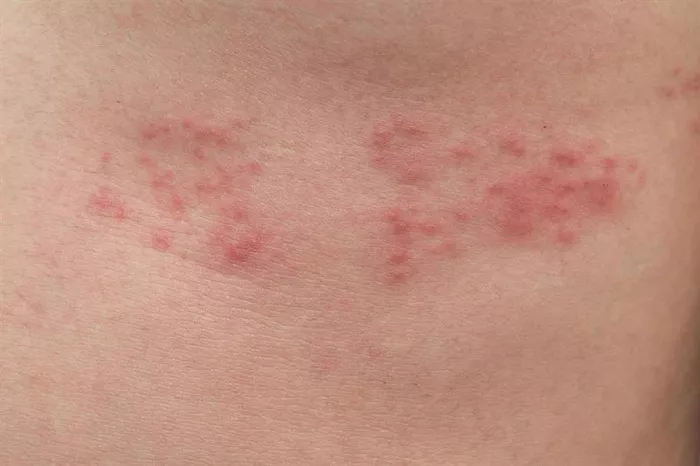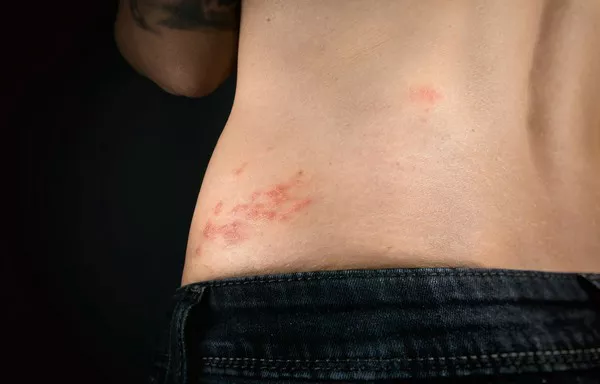Shingles, also known as herpes zoster, is a painful rash caused by the varicella-zoster virus, the same virus that causes chickenpox. While it’s often linked to older adults and those with weakened immune systems, anyone who has had chickenpox can develop shingles. This article will explore how long shingles last after taking medication, what factors affect the duration of the illness, and how medication helps manage symptoms and speed up recovery.
What Is Shingles?
Shingles occurs when the varicella-zoster virus, which lies dormant in the body after a chickenpox infection, reactivates. This can happen years or even decades after a person has recovered from chickenpox. When the virus reawakens, it travels along nerve fibers to the skin, causing a painful rash that often appears as a stripe of blisters on one side of the body. In addition to the rash, shingles can cause burning, itching, and extreme sensitivity.
How Long Does Shingles Last?
Without treatment, shingles typically lasts between two to four weeks. However, the duration of shingles can vary depending on several factors, including the person’s age, immune system, and how quickly they begin treatment. With medication, most people experience a shorter and less intense course of the illness.
Role of Medication in Treating Shingles
The primary treatment for shingles involves antiviral medications, which help reduce the severity of the infection and speed up recovery. These medications work by inhibiting the growth of the varicella-zoster virus, reducing the number of virus particles and the duration of the illness.
Common antiviral medications prescribed for shingles include:
- Acyclovir (Zovirax)
- Valacyclovir (Valtrex)
- Famciclovir (Famvir)
These medications are most effective when started within 72 hours of the appearance of the shingles rash. The earlier the treatment begins, the more effective it will be in reducing the severity of the rash and shortening the duration of symptoms.
How Long Does Shingles Last with Medication?
The use of antiviral medications can significantly shorten the duration of shingles. Typically, the rash will still go through its full cycle, but the time it takes to heal is faster. Here’s a general breakdown of what to expect:
Initial Symptoms and Rash
Before the rash appears, most people experience a prodrome phase, which can last one to five days. During this time, they may feel pain, itching, or burning along the area where the rash will form. This pain often begins before the rash is visible, and it’s often described as a sharp or stabbing sensation.
When the rash first appears, it usually develops as small red bumps that turn into fluid-filled blisters. Over the next few days, the blisters will begin to crust over. The pain and discomfort from the rash can last anywhere from seven to ten days after the appearance of the first blisters.
Antiviral Treatment
If antiviral medication is started early (within the first 48-72 hours of symptoms), the rash and blisters tend to heal more quickly. Most people will see a reduction in pain and discomfort after about 3 to 5 days of antiviral treatment. The rash will continue to heal, and scabbing will occur, usually within 10 to 14 days from the start of the rash.
Pain After the Rash Heals
Even after the rash has healed and the blisters have scabbed over, some people experience lingering pain, a condition called postherpetic neuralgia (PHN). PHN is more common in older adults, but it can occur in anyone who has had shingles. This pain can last for weeks, months, or even years after the rash has disappeared. Antiviral medications do not prevent or treat PHN, but other treatments, such as pain relievers, nerve-blocking medications, or topical creams, may help manage these symptoms.
Factors That Influence How Long Shingles Last After Medication
Several factors can influence how long shingles lasts, even when medication is used. These include:
Timing of Medication
Starting antiviral treatment as soon as possible after the rash appears is key. If treatment is delayed, the effectiveness of the antiviral drugs may be reduced, and the shingles may last longer. This is why it’s important to see a doctor immediately if you suspect you have shingles.
Age
Older adults, especially those over the age of 60, are more likely to experience a longer duration of shingles. They may also have a higher risk of developing complications like postherpetic neuralgia. However, antiviral medications can still shorten the course of the illness and reduce its severity.
Immune System Health
People with weakened immune systems, such as those undergoing chemotherapy or living with HIV/AIDS, may experience a more prolonged and severe case of shingles. Their immune system may struggle to fight off the virus effectively, leading to a longer duration of symptoms. For these individuals, early treatment is essential to manage the infection.
Severity of the Rash
The severity of the shingles rash can also affect how long the illness lasts. People with a more widespread rash or blisters that are larger and more painful may experience longer healing times. However, antiviral medication can still help speed up the healing process and reduce pain.
Pain and Postherpetic Neuralgia
One of the most common long-term effects of shingles is postherpetic neuralgia (PHN), where nerve pain persists after the rash has healed. This pain can last for weeks, months, or even longer. PHN is not directly related to the duration of the rash itself, but it is an important factor in the overall length of the shingles experience. While antiviral medication helps with the initial infection, it does not prevent PHN.
Managing Shingles Pain
While antiviral medications help speed up the healing of the rash, other treatments are often needed to manage pain. Pain from shingles can range from mild to severe and may require:
Over-the-counter pain relievers like ibuprofen or acetaminophen.
Prescription pain medications such as opioids or narcotics for more severe pain.
Topical treatments, including lidocaine patches or capsaicin creams, can help reduce the pain on the skin.
Antidepressants or anticonvulsants may be prescribed for nerve pain, especially in cases of postherpetic neuralgia.
How to Prevent Shingles
While medication can help manage shingles once it occurs, it’s important to know that there is also a vaccine available to reduce the risk of developing shingles. The shingles vaccine (Shingrix) is recommended for adults aged 50 and older, and it has been shown to be highly effective in preventing shingles and reducing the severity of the disease in those who do get it.
The vaccine reduces the likelihood of developing shingles and can also help prevent complications like postherpetic neuralgia.
Conclusion
In summary, the duration of shingles after taking medication depends on a variety of factors, including the timing of medication, the severity of the rash, and the individual’s age and health status. Generally, antiviral medications help shorten the duration of the illness, reduce pain, and speed up the healing of the rash. However, postherpetic neuralgia may still occur, extending the duration of symptoms. Starting antiviral treatment early, managing pain effectively, and preventing future outbreaks with the shingles vaccine are all important steps to improving recovery and quality of life.
If you suspect you have shingles, it’s important to seek medical attention as soon as possible to start treatment and prevent complications.
Related topics:

























